Audiences watching Christopher Nolan’s 2023 motion picture Oppenheimer were subjected to an unforgettable image. Late in the film, Nolan has J. Robert Oppenheimer, masterfully portrayed by Cillian Murphy, imagine a scenario of total nuclear war. The shots of Earth ablaze in that movie presaged the most dreadful possible outcome of the arms race between the United States and the Soviet Union that so frightened Oppenheimer.
Ever since Norman Cousins’s August 1945 essay on the atomic bomb, “Modern Man is Obsolete,” some of the world’s most thoughtful minds have addressed, with extreme urgency, the shadow cast over planetary life by nuclear and thermonuclear weapons. Ten years after the conclusion of World War II and the defeat of the Axis powers, a text bearing two famous names prompted a new round of debate.
On July 9, 1955, a document was published by the esteemed octogenarian British philosopher and mathematician Bertrand Russell. It carried the endorsement of the late Albert Einstein, who had died a few months earlier.[i] Some of the leading scientists in the world, including Max Born, Joseph Rotblat, Percy Williams Bridgman, and Linus Pauling, affixed their signatures to it. Known since as the Russell–Einstein Manifesto (Russell wrote the text), this was an international event. The Manifesto appeared exactly one week before the 10th anniversary of the Trinity test of the “Fat Man” plutonium weapon and shortly before celebrations of the end of the Pacific War.
In retrospect, this work forces us to peer back into the condition of the world in the mid-1950s. It is a world threatened by the rapidly expanding number of atomic bombs (Britain had acquired the bomb in 1952). More significantly, for Russell, the invention of the hydrogen bomb by both the Americans and the Soviets overshadows everything else that came before it. He takes the introduction of thermonuclear devices into the military establishments of the superpowers to be so momentous that he organizes the entire Manifesto around it. This new fusion weapon, he recognizes, was exponentially more powerful than the weapons dropped by the United States on Hiroshima and Nagasaki or detonated by the Soviets in August 1949. Russell cites contemporary estimates about the H-bomb as 2,500 times more powerful than the “Little Boy” A-bomb. The fact that the United States and Soviet Union both possessed this monstrosity by the end of 1953 heralded a new and ominous stage in the history of civilization. “All, equally, are in peril, and, if the peril is understood, there is hope they may collectively avert it,” Russell declares.
'Universal Death'
As he unfolds his argument, Russell concedes that there are things of which he—nor anyone else for that matter—can be certain. Who really can speak definitively about the destructive capability of the hydrogen bomb? How many would die in a conflict where thermonuclear arms were unleashed by both sides? One can only argue, says Russell, from a sense of probabilities and from reliance on great scientific and military authorities. He states in quite plain language: “We have found that the men who know most are the most gloomy.”
Proceeding from this state of honest uncertainty, the Manifesto wields tremendous rhetorical power. Russell points to the terrible situation where gigantic cities like Moscow, London, or New York City now can be obliterated by the H-bomb. Yet it was not only a question of megatons—the potential for mass death by radiation had metastasized as well. Russell recalls the case of Japanese fishermen like Aikichi Kuboyama (though he does not mention him by name) who had died in 1954 from the effects of fallout several months after the Castle Bravo test at Bikini Atoll. A planet fully irradiated from an all-out nuclear war, which Russell does not hesitate to presume as a distinct possibility, would end up as a dead world: “But the best authorities are unanimous in saying that a war with H-bombs might possibly put an end to the human race. It is feared that if many H-bombs are used there will be universal death, sudden only for a minority, but for the majority a slow torture of disease and disintegration.”
Universal death. No one can question the farsightedness of the phrase. Against naysayers, Russell invokes the specter of “universal death” as a means of mobilization. This was a menace that spared no nation, class, or individual. Political and moral responsibility in the (Thermo)Nuclear Age, the Manifesto infers, must presuppose worst-case scenarios. Whether sooner or later, a nuclear cataclysm would exterminate all of humankind. Here, Russell anticipates the ideas of philosophers Günther Anders and John Somerville (both great admirers of Russell and Einstein), with their alarming conceptions of “globocide” and “omnicide,” respectively.
The prospect of human extinction, then, compelled men, women, and children around the globe to come to grips with an inescapable choice: “Shall we put an end to the human race; or shall mankind renounce war?” The Russell–Einstein Manifesto permits no less catastrophic alternatives. Any war could lead to nuclear annihilation. So long as that possibility existed, war had to be completely eliminated from the sphere of human action. To do this, something only imagined in world history’s most advanced philosophical and religious conceptions, required two immediate objectives: First, peace between the American and Soviet blocs, described as an “agreement between East and West” in the text, and second, “an agreement to renounce nuclear weapons as part of a general reduction of armaments.” Obviously, these were no small feats in and of themselves.
Russell knew this all too well, having seen two world wars in addition to numerous other conflicts. He pleads with individuals to step out of their national and religious identities and return to their humanness. “We appeal as human beings to human beings,” he implores. “Remember your humanity and forget the rest.” Elsewhere in the text, he calls on people to remember they are a part of “the species Man” and to “consider yourselves only as members of a biological species.” The recourse to a sort of species consciousness or species awareness remains one of the perspicacious aspects of the Manifesto. Clearly, for Russell, the willingness to act from a basis of fundamental solidarity with other humans, irrespective of their nationality or ideology, had to take root for civilization to survive.
Even with its depiction of a monumental threat to humankind, the statement exudes an astounding optimism. Despite the carnage of World War II and what we now usually call the Holocaust, Russell holds to a perspective grounded in progress. In fact, he explicitly identifies “continual progress in happiness, knowledge, and wisdom” as something within reach of human beings. In its most brazenly utopian moment, the Manifesto asserts that a “way lies open to a new Paradise.” Many later critiques of the nuclear threat would repudiate, however, such progressivist assumptions.
What, then, was to be done? What course of action did the Manifesto propose to exit this terrifying global situation? In retrospect, the text slides quickly into a politics of moderation. It becomes an exhortation to world leaders, to “the governments of the world.” “To find peaceful means for the settlement of all matters of dispute between them” is the path forward advanced by Russell. What role would the masses of human beings imperiled by the bomb have? What political means would be marshaled to stem the tide of nuclear disaster? There is little in the text for readers seized by such questions. For all its moderation, politically, the Manifesto was bound up, though, with the goal of the most ambitious transformation of human society—to live and act without armed conflict.
Legacy of the Russell–Einstein Manifesto
The Russell–Einstein Manifesto continues to be one of the signature documents of the early Cold War. Written for a general public, it sought to intervene in what seemed to be an arms race destined to head over the cliff—and take everyone down with it. For all his courage in confronting the specter of nuclear Armageddon, Russell does not anticipate in the text another “breakthrough” in the development of nuclear and thermonuclear armaments—the Intercontinental Ballistic Missile. It is the ICBM that haunts the closing moments of Oppenheimer, tormenting the nuclear physicist. This amalgamation of the rocketry originally pioneered by Wernher von Braun and others in Nazi Germany with nuclear warheads would make Russell, Oppenheimer, and the world tremble anew in the late 1950s.
[i] All references to the Russell-Einstein Manifesto in this article are taken from the version uploaded by the Atomic Heritage Foundation:
New Podcast Series: Oppenheimer And The Manhattan Project
The National WWII Museum presents the newest season of its podcast, "World War II On Topic: Oppenheimer and the Manhattan Project." Episodes are available weekly starting July 24 on Apple Podcasts, Spotify, and SoundCloud.
Jason Dawsey, PhD
Jason Dawsey, PhD, is ASU WWII Studies Consultant in the Jenny Craig Institute for the Study of War and Democracy.
Cite this article:
MLA Citation:
APA Citation:
Chicago Style Citation:
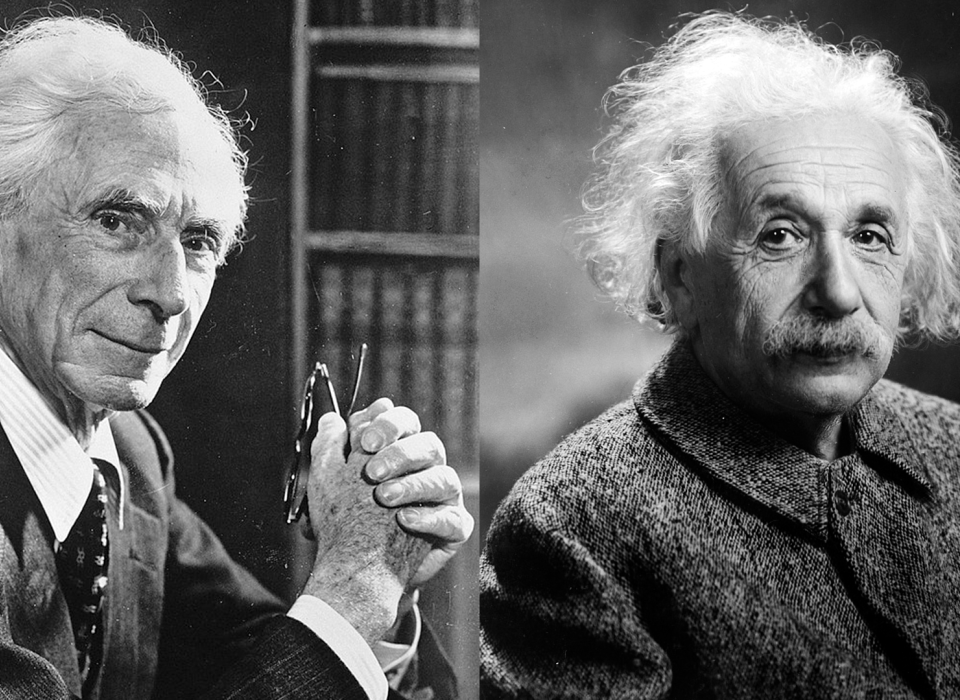
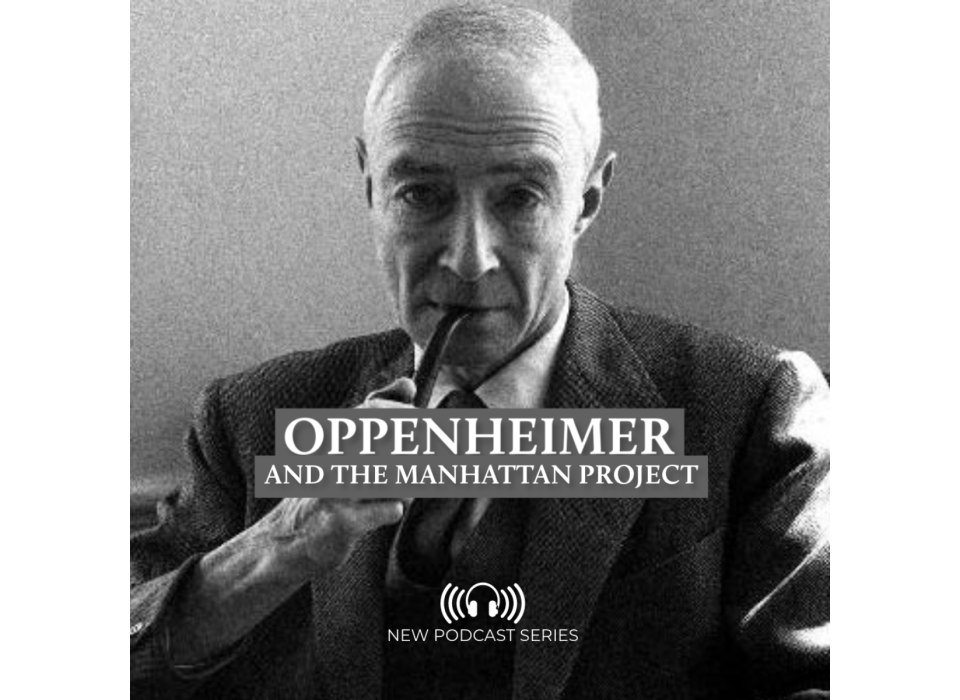

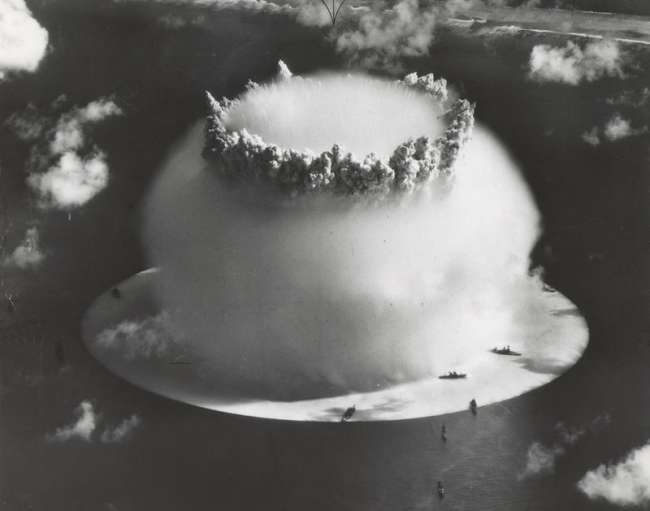

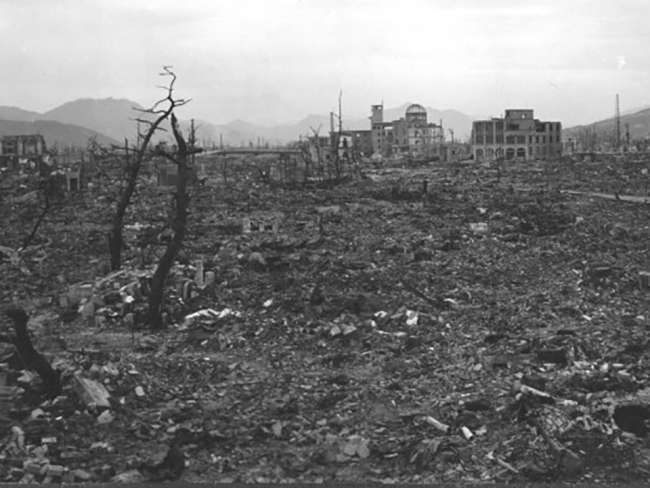
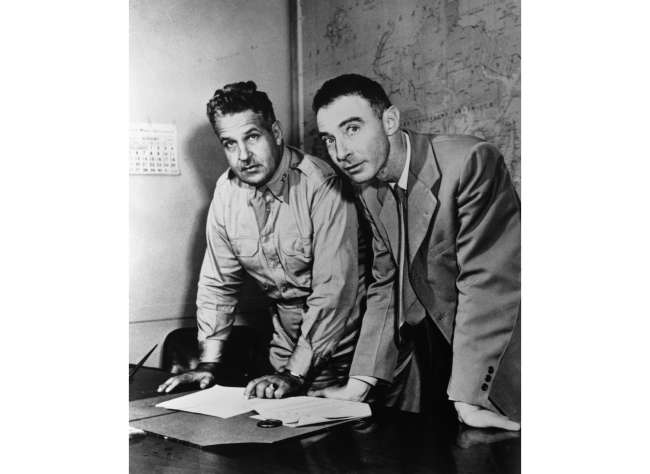




![Max Fuchs, New York City cantor, sings as Rabbi Sydney [sic] Lefkowitz, Richmond, VA, conducts the first Jewish services from Germany.](/sites/default/files/styles/max_650x650/public/2025-10/image1.jpg)


